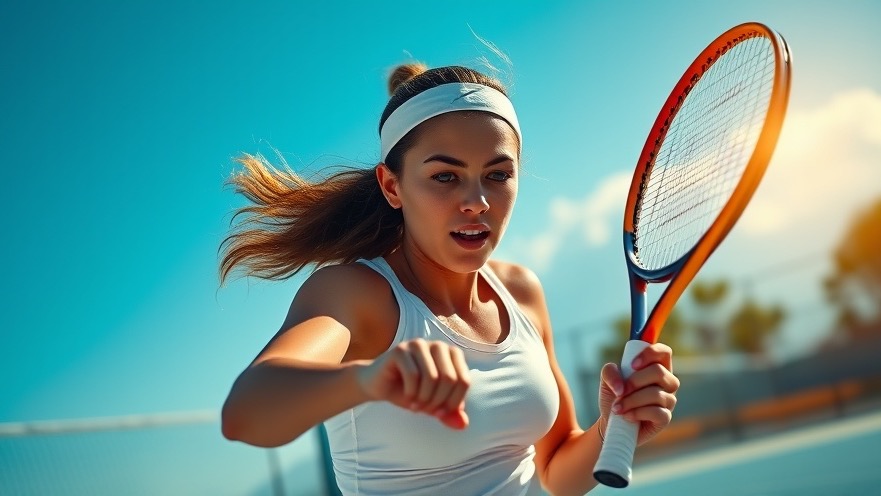
Unlocking Your Game: The Racket as an Extension of Your Arm
Imagine for a moment that your racket is more than just a tool; it’s an extension of your arm. This transformative idea is at the heart of enhancing your gameplay, allowing for greater control and finesse as you engage with the ball in tennis or pickleball. Understanding that your racket acts as your palm, responding to your every slight movement, can reshape the way you approach your swings and strategies on the court.
In 'How to use the Racket as an Extension of your Arm', the discussion dives into the significance of fine adjustments and equipment weight, exploring key insights that sparked deeper analysis on our end.
Understanding Fine Adjustments
In the video “How to use the Racket as an Extension of your Arm”, we delve into how small movements can lead to significant improvements in your game. Just like a skilled chef uses chopsticks to pick up delicate items with precision, a player should use their racket to perform nuanced maneuvers that add spins, change directions, or deliver a soft touch when required.
The video emphasizes that your wrist’s job is not to generate power but to make fine adjustments that will control the racket head's position. Whether offering a slicing backhand or sending a powerful forehand down the line, these small tweaks can drastically alter ball placement without compromising the strength behind your shots.
Finding the Right Racket Weight
One of the key takeaways from the discussion is the importance of racket weight. If your racket feels heavy, your performance suffers. A lighter racket enables free, fluid movements that are essential for executing your shots with finesse. If you find yourself struggling to swing, it might be time to reconsider the equipment you’re using.
A racket that feels too burdensome can impede not just the shot but your entire gameplay. Thus, transitioning to a lighter option can enhance your ability to perform delicate adjustments, ultimately leading to more effective gameplay.
The Dynamics of Grip: Firm But Flexible
Maintaining a firm yet flexible grip is paramount. The video shares a crucial insight: from the moment you hit the ball, your grip should tighten, allowing for continuity of force without breaking the motion. This balance between strength and control is what keeps your racket responsive while enabling you to unleash potent shots without losing grip.
Many players make the mistake of thinking power comes solely from arm swings or raw force. In reality, it's about feeling the connection between your hand and the racket, channeling that energy through your wrist into a precise shot.
Emotional Engagement: The Racket as an Extension
As athletes, our emotional engagement with our equipment can significantly influence our performance. Treating your racket as an extension of your palm allows you to build an intimate relationship with it, much like an artist with their brush. Just as each stroke on a canvas depends on touch and sensitivity, so does each swing on the court rely on how effectively you can control your racket.
Being emotionally invested in your racket fosters a deep understanding of your gameplay. With practice, you can develop the confidence to make swift adjustments during critical moments in a match, whether that be during intense rallies or when strategically placing your shots for maximum effect.
Final Thoughts on Your Performance
In summary, viewing your racket as an integral part of your arm can elevate your game. It’s not merely about hitting hard; it’s about feeling confident and fluid while exerting control and precision over your shots. The fusion of technique and emotional engagement forms the cornerstone of becoming a formidable player, whether on the tennis court or a pickleball court.
Understanding these dynamics—from selecting the right racket weight to mastering your grip—will place you ahead of the pack. Your equipment should never feel limiting; instead, let it amplify your skill and grace.
If you want to explore more innovative techniques or strategies that can transform your game significantly, think of this approach as launching your journey toward mastering the sport you love. It's time to rethink how you play, challenge your perceptions, and tap into the full potential of what it means to wield your racket as an extension of yourself.
 Add Row
Add Row  Add
Add 




Write A Comment